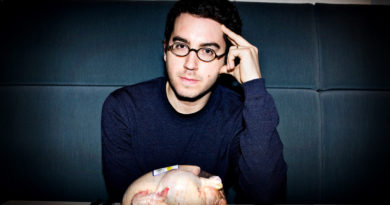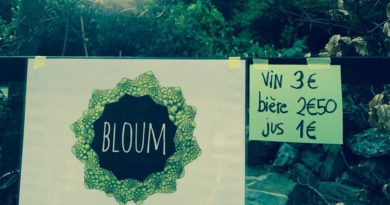11 Brussels squares that are older than Belgium
How many public squares are there in the Brussels-Capital Region? A total of 248, according to the Brussels Institute for Statistics and Analysis (BISA). Of the region’s 19 municipalities, Brussels City has the largest number of public squares with no less than 62 in its territory. Uccle ranks second with 25 followed by Anderlecht which owns 22 public squares. Koekelberg has the fewest public squares with only four.
Most of the public squares in Brussels were developed in the 19th and early 20th century when Belgium was slowly moving towards urbanization. But a few of them were already in existence even before the Kingdom of Belgium was born in 1831. Just like the statues in Brussels, these ancient squares provide a glimpse into the history of Belgium and its people. Let’s revisit some of them.
1. Grand Place, 11th century
We start off with “the square of all squares” in Belgium. Grand Place began as an open-air market called Nedermerckt in the 11th century when the territories of Belgium were still part of the Holy Roman Empire. The market developed around a fort that was constructed on Saint-Géry Island, the largest island in the Senne river known as the historic waterway of Brussels. This ancient island is historically significant since it is here that we can trace the first seed of what would eventually become Brussels. The island of Saint-Géry ceased to exist in the late 19th century when the Senne river was covered and diverted as part of the urban development of Brussels.
While younger and more recent public squares were intentionally designed and created as places of social interaction in the grand scheme of urbanization, older squares like the Grand Place evolved even before the famous buildings and streets built around them. It wasn’t until early 15th century that the Brussels City Hall was erected followed by the Maison du Roi in the 16th century. Soon thereafter, wealthy tradesmen and powerful guilds in Brussels also established their headquarters around the square.
2. Place de la Monnaie, 16th century
This square was named after the Monnayerie, a coin factory owned by the Duchy of Brabant which was one of the States belonging to the Holy Roman Empire. Back then, the Brussels region formed part of the Duchy of Brabant, along with Antwerp, Flemish Brabant, and Walloon Brabant. The demolition of the Monnayerie in 1531 paved the way for the construction of streets which eventually led to the creation of the square.
3. Place Anneessens, 1639
Like the Grand Place, this centuries-old square also grew out of a public market in Foulons which was once a meadow along the Senne river. After the covering of the Senne river in the 19th century, the market was moved to Place du Jeu de Balle in the Marolles district. In 1889, the square was named after François Anneessens who was beheaded in 1719 for defending the rights of Brussels citizens and guilds against the government of the Austrian Netherlands. A statue in honor of Anneessens stands in the center of the square.
4. Place de la Vieille Halle aux Blés, 1695
This triangular square which bears the statue of legendary Belgian singer Jacques Brel owes its name to the historic Brussels wheat market which was built in the center of the square in the 13th century and demolished in 1626. The square was enlarged in 1681 and reconstructed following the bombardment of Brussels in 1695 by French troops sent by King Louis XIV. Considered one of the most catastrophic events in the history of Brussels, the bombardment led to the destruction of Grand Place and other buildings in the city.
5. Place des Martyrs, 1775
More than 400 heroes of the 1830 Belgian revolution are buried in the crypt under the ground of Place des Martyrs. Hence, the name. But in 1775, the square was inaugurated under the name Place Verte which later on became Place Saint-Michel in honor of Brussels’ patron saint. In 1795, the French changed its name to Place de la Blanchisserie which became the venue of a vegetable market followed by a lumber market. After the markets were abolished, the square was dedicated to the martyrs who fought and died for Belgian independence.
6. Place Royale, 1780
In 1731, a massive fire razed the old Palace of Coudenberg which was the seat of government in the Duchy of Brabant from the 11th century until its destruction. It wasn’t until 1771 that the decision was made to build a square in the area adjacent to the old palace grounds where we now find the Royal Palace of Brussels.
French architect Barnabé Guimard received the commission to reconstruct the old royal complex including the creation of a park and a public square replicating the Place Royale in Reims. The square was first called Place de Lorraine before it became Place Royale. This public square has witnessed some of the most important events in the history of Belgium, including the 1831 coronation of King Leopold I, Belgium’s first king.
7. Place du Nouveau Marché aux Grains, 1787
This large rectangular square lies on what used to be the site of a monastery. During this period in history, monastic and religious foundations were abolished and their possessions were appropriated by the state. The square was transformed into a grain market and redecorated with linden trees in 1802. It remained a hub for grain merchants until the 1960s.
8. Place Jean Jacobs, 18th century
Jean Jacobs was the founder of a Belgian university in Bologna which has provided education and training to generations of young people from Brussels since 1651. In 1895, the square located along Boulevard de Waterloo was named after him. But it dates back to the 18th century when it was called Kattenhof owing to the number of stray cats that roamed the area. In 1829, it was renamed Place du Pachéco after the hospice which once stood close to the square.
9. Place de la Chapelle, 1822
This square beside the Notre Dame de La Chapelle used to be an enclosed cemetery with an obelisk fountain in 1765. The cemetery was abandoned in 1784 and the wasteland was transformed into a public square 1822. The central fountain was removed during the construction of the square, but it was reinstalled in 2005.
10. Place des Barricades, 1824
Place des Barricades is the only ancient square in Brussels that is circular in shape. It was built in 1824 and called Place d’Orange, not because of its shape but as a tribute to Prince William I of Orange who was then the ruler of the United Kingdom of the Netherlands. In those years, Belgium was still a southern province of the Kingdom which was formed in the aftermath of the Napoleonic wars.
The Belgian war of independence in 1830 was essentially fought on the basis of religion. The northern part of the Kingdom was dominated by Protestants while the southern part was populated by Roman Catholics. The despotic rule of Protestants in the Kingdom fuelled rebellion in the southern provinces which resulted in the revolution. When Belgium gained independence in 1831, Place d’Orange came to be known as Place des Barricades in memory of the battles of the Belgian Revolution.
11. Place des Palais, 1827
In 1775, when French architect Barnabé Guimard began designing the Place Royale and the Parc Royale, four streets were established around the park: Rue Royale, Rue de Brabant now known as Rue de la Loi, Rue Ducale, and Rue de Belle-Vue which stretched in front of the old Palace of Coudenberg. In 1827, Rue de Belle-Vue was expanded and renamed Place des Palais.



